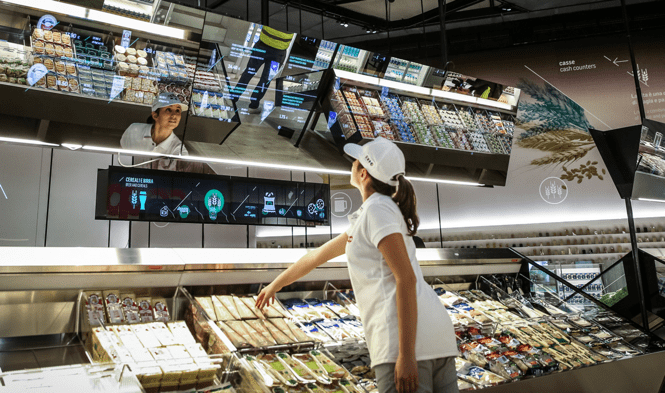According Harbor Research, some 4.3B new devices (excluding laptops and PCs) were connected to the Internet in 2015. Based on current installations, our modeling forecasts there will be some 36B devices in just four years (by 2020). But one central question is how and where will these devices come online?
This post was originally posted on TechTarget’s IoTAgenda site and can be accessed in full here.
As the IoT space matures, what we will see is an eventual convergence of what has thus far remained largely bifurcated: Industrial IoT and Consumer IoT. We are, in fact, already seeing this trend underway, as what have traditionally been ‘consumer’ devices are leveraged in enterprise settings, and enterprise-class technology moves into the hands of the masses. To understand this convergence is to consider examples of it, as manifestations vary considerably.

Image source: Army-technology.com
Manufacturers apply virtual reality for more agile product prototyping and employee training
The virtual reality market has mostly belonged to gamers until recently. Now, discrete manufacturers such as Ford and BAE Systems are using augmented and virtual reality tools to make the design and prototyping process faster, more agile, and far more cost effective than physical renderings. These virtual models and simulations help manufacturers make decisions earlier in the design process, detect issues more rapidly, and enable real-time collaboration across geographically diverse groups of engineers and designers. These manufacturers, among many other industrial businesses, are using this technology to train employees to become familiar with dangerous working environments, simulating, for instance how to handle dangerous factory or in-the-field situations.

Image source: Salesforce.com
Software vendor builds platform for wearables
Enterprise software vendor, Salesforce.com launched a full platform for industrial service applications designed for the Apple Watch in 2015. Businesses are already relying heavily on consumer mobile devices in their enterprise mobility and IoT service functions, from communications, to analytics, to remote monitoring, to appointment scheduling, to inventory tracking, machine controls, troubleshooting and beyond.

Image source: Microsoft
Grocery store augments shopper experience (and replenishment process)
Coop, a grocery retailer in Italy, is experimenting with the Kinect, as well as robots, interactive screens, and sensors, to detect when shoppers pick up a product, then use that sensor data to display relevant information (its composition, source, freshness, nutrition, etc.) on a digital sign above the item. By measuring shelf weights and locating stock beneath the shop floor, they are able to optimize replenishment and automate inventory replacement.
Insurance looks to wearables to mitigate risks (and costs) for workers injured on the job
Insurance company AIG recently acquired Human Condition Safety (HCS), a wearable start-up, in a bid to mitigate its risks (and costs) of employees injured in the workplace. As one of the largest providers of worker’s compensation coverage, AIG will leverage the research, development, software, analytics, and wearable hardware that HCS has been developing for high risk worksites. The technology, according to AIG, can detect how much a worker is carrying, risky bodily movements that could result in injury, and proximity to dangerous equipment, among other worker or environment hazards.
Logistics company streamlines packaging operations
Gaming consoles and movement trackers are now being applied in industrial and commercial infrastructure because they often serve the use case better, and more cheaply, than more traditional machine vision solutions. DHL, for instance, is using Microsoft Kinect sensors to scan pallets, allowing it to determine optimal packing sequences and volume-based shipping prices.
From robots assisting shoppers in a home supplies retailer such as Orchard Supply Hardware, to 3-D printing of customized toys made available to the kids via Mattel, to conveying the value of ‘smart cities’ to citizens through consumer mobile apps that direct drivers to available parking spaces… examples of this collision are manifold. They are reflective of the vastness and variety of applications, interfaces, and componentry that comprise the Internet of Things itself.
For consumers, the goal is visibility into our carbon footprint, potential risks or areas needing our attention, greater convenience, time and information efficiency, and simplicity. For businesses, the goal is merging ‘internal’-facing and ‘external’ or customer-facing connected environments for a unified operational and customer experience.
The perceived benefits, efficiencies, and novelty inherent to applying sensor-based technology to will drive this convergence. For the pragmatic, costs and adoption pressures will continue to blend these worlds as employees will desire the tools they have at work in their personal lives, and vice versa.

